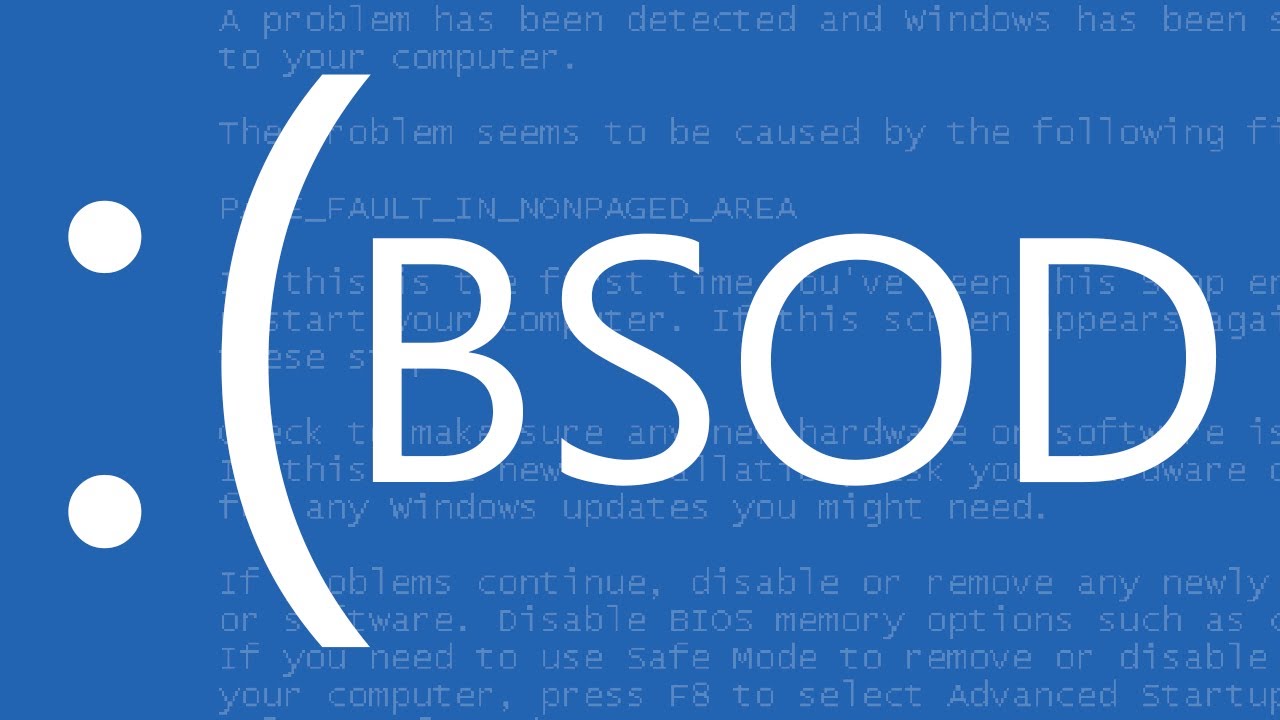Blue Screen of Death (BSOD): Causes & Fixes
The Blue Screen of Death (BSOD) is one of the most dreaded issues Windows users can encounter. It strikes suddenly—interrupting your work, gameplay, or even a peaceful idle moment—leaving your PC to crash and reboot. For most users, it’s alarming and confusing, especially with the vague technical error codes and cryptic messages displayed.
However, BSODs aren’t necessarily a sign your computer is dying. They’re protective crash screens that Windows uses to prevent further damage from serious errors. In most cases, with the right steps, you can diagnose and fix the root cause without needing professional help.
In this comprehensive guide, we’ll explore the most common causes of BSODs, how to troubleshoot them effectively, and how to prevent them in the future.
What Is a Blue Screen of Death (BSOD)?
A BSOD is a stop error that occurs when Windows encounters a critical issue it cannot recover from. The system shuts down to prevent corruption or damage. The screen typically includes an error message, a STOP code (like 0x0000007E), and sometimes a QR code for more information.
With Windows 11, Microsoft has tried to make BSODs more readable and helpful, but the core issue remains: your system has crashed, and it needs your attention.
Common Causes of BSODs
Understanding what causes BSODs is the first step to fixing them. While the root causes vary, they generally fall into a few categories:
1. Driver Issues
Outdated, corrupted, or incompatible drivers are a major culprit. When a driver misbehaves—particularly for graphics cards, network adapters, or storage devices—it can cause system crashes.
2. Faulty Hardware
Defective RAM, hard drives, SSDs, or even a failing motherboard can lead to blue screens. Hardware failure usually causes frequent, unpredictable BSODs even after system reboots.
3. Software Conflicts
Incompatible or poorly coded software—especially system-level utilities, antivirus software, or third-party security apps—can trigger BSODs. Malware also fits into this category.
4. Overheating
Excessive heat from poor ventilation or overclocking may result in thermal shutdowns that manifest as BSODs.
5. Windows Updates
Sometimes Windows updates introduce bugs or incompatibilities, especially on newly released hardware or configurations.
6. Corrupt System Files
Critical Windows files can become corrupted due to improper shutdowns, disk errors, or malware—causing instability.
How to Fix the Blue Screen of Death
Let’s now dive into actionable steps you can take to fix and prevent BSODs.
Step 1: Note the Error Code
When the BSOD appears, don’t panic—take note of the STOP code shown. Examples include:
-
IRQL_NOT_LESS_OR_EQUAL -
CRITICAL_PROCESS_DIED -
SYSTEM_THREAD_EXCEPTION_NOT_HANDLED
These codes help identify the source of the problem. You can search Microsoft’s official documentation or forums for error-specific advice.
Step 2: Boot Into Safe Mode
If your PC crashes immediately after logging in, boot into Safe Mode to troubleshoot.
Steps:
-
Turn your PC off and on 3 times to trigger recovery mode.
-
Choose Advanced Options > Startup Settings > Restart.
-
Press
4to enter Safe Mode.
Safe Mode loads minimal drivers and services, giving you a clean environment to diagnose issues.
Step 3: Update Drivers
Since drivers are a leading cause of BSODs, ensure all your drivers are up to date.
-
Right-click Start > Device Manager.
-
Look for yellow warning signs next to devices.
-
Right-click and choose Update driver.
You can also download updated drivers directly from the manufacturer’s website—especially for GPUs (NVIDIA, AMD) and chipsets (Intel, AMD).
Third-party tools like Driver Booster or Snappy Driver Installer can automate this process.
Step 4: Uninstall Problematic Software
If BSODs started after installing new software, that app might be the issue. Uninstall any recently added programs:
-
Go to Settings > Apps > Installed Apps.
-
Sort by Install Date.
-
Remove suspicious or unnecessary apps.
Security software and system utilities are common offenders. Try uninstalling them temporarily to test stability.
Step 5: Run a Malware Scan
Malicious software can corrupt system files or interfere with low-level Windows operations.
-
Open Windows Security > Virus & Threat Protection and run a full scan.
-
Follow up with a secondary scanner like Malwarebytes to catch additional threats.
Step 6: Use System File Checker
Corrupt system files can crash your OS. Use built-in tools to repair them.
Open Command Prompt as Administrator, and run:
Wait for the scan to complete. If it finds corrupt files, Windows will attempt to repair them. You can also run:
This command uses Windows Update to replace broken system files.
Step 7: Check for Overheating or Hardware Failure
If your PC gets hot before crashing, thermal issues may be involved. Use tools like HWMonitor or Core Temp to track CPU/GPU temperatures.
To check for faulty RAM:
-
Press
Win + R, typemdsched.exe, and hit Enter. -
Restart and let Windows Memory Diagnostic test your RAM.
For storage drives:
-
Open Command Prompt and type:
-
Then press
Yto scan on reboot.
Bad RAM or a failing drive is a serious issue—consider replacement if problems are found.
Step 8: Roll Back Recent Updates
If a BSOD started after a recent Windows update, rolling it back may resolve the problem.
-
Go to Settings > Windows Update > Update History > Uninstall Updates.
-
Select the most recent update and uninstall it.
You can also pause updates temporarily until Microsoft releases a fix.
Step 9: Perform a System Restore
If nothing else works and your system was stable earlier, use System Restore.
-
Type
rstruiin the Start menu to launch it. -
Choose a restore point from before the problem started.
-
Let Windows revert your system settings and files.
Note: This won’t delete personal files but will remove installed software and drivers added after the restore point.
Step 10: Reset or Reinstall Windows
As a last resort, you can reset your PC without losing your files:
-
Go to Settings > System > Recovery > Reset this PC.
-
Choose Keep my files, and follow the instructions.
This option reinstalls Windows while preserving personal documents. Apps and drivers will need to be reinstalled.
If that fails, a clean install using a bootable USB may be required.
Preventing BSODs in the Future
-
Keep drivers and Windows updated regularly.
-
Avoid installing unknown or untrusted third-party software.
-
Use high-quality antivirus protection.
-
Perform routine hardware checks.
-
Maintain good airflow and cooling in your PC.
For advanced users, tools like WhoCrashed or BlueScreenView can analyze crash dumps (.dmp files) to trace what caused the crash in more detail.
Final Thoughts
The Blue Screen of Death, while intimidating, is usually a solvable problem. Most BSODs stem from software issues, faulty drivers, or minor hardware glitches. By approaching the problem logically—starting with Safe Mode, updating drivers, and removing suspicious apps—you can often fix it without needing professional repair.
Regular maintenance, vigilance during software installations, and keeping your system updated are the best ways to minimize the chance of a BSOD in the future.
If you continue facing BSODs after all attempts, it may be time to consult a technician or consider hardware replacement. But in most cases, these steps will get your system running smoothly again.

With years of experience in technology and software, John leads our content strategy, ensuring high-quality and informative articles about Windows, system optimization, and software updates.












![7 Common Windows 10 Errors And How To Fix Them [2020] - TechDipper](https://windows12download.com/wp-content/uploads/2023/04/Windows-10-Errors-300x169.jpg)

Post Comment
You must be logged in to post a comment.